
Street photographers are a furtive bunch, anonymous to the subjects they capture in their swirls of grief, protest, celebration, or contemplation. Their anonymity amongst crowds does not necessarily mean, however, that they are unseen. Most of the great street photographers, like Henri Cartier-Bresson, Vivian Maier, and Walker Evans, caught magical moments because they connected with their subjects. In the days before camera phones — let alone a culture that could survive without “selfie sticks” — the possibility of being captured in the middle of something (jubilation or devastation or everything in between) was intriguing. Beyond that, of course, was the ability of the greatest photographers to find a relationship with their subjects. This was often achieved through a simple gesture, a re-assuring voice, and an understanding of how to blend-in, when necessary.
In Jim Marshall: Show Me the Picture, by Amelia Davis (with additional essay contributions by Karen Grigsby Bates, Michelle Margretts, Joel Selvin, and Meg Shiffler), we get a full portrait of a master documentary photographer; a man who captured some stunning images at the early stages of the Civil Rights Movement and took that same sense of perspective from the Jazz festival and nightclub scenes of the early 1960s through that decade and into the next. Marshall might be best known for the cover shot of Peter Frampton, from behind, at the Day of the Green festival in August 1975; or the panoramic shot from high up in the rafters of the crowd at Woodstock six years earlier. But it’s the anonymous intimacy of his work that really resonates. Take Shiffler’s early reflections about Marshall’s ability to connect with his subjects:
“In some of Marshall’s most successful images…individuals catch him in the act of pointing his lens their way…The eyes of Marshall’s knowing subject draw viewers into the very center of the frame, and everything else becomes secondary.”
This becomes immediately clear to the reader. Marshall’s subjects were as eager to be photographed as he was to tell their story via photography. For example, man and woman are outside a ravioli factory. She doesn’t seem to know she’s being photographed, but the man does. He looks knowingly inside Marshall’s lens. The woman stares into the mirrored column, her back to the camera as she applies cream to her hands — and she suddenly notices Marshall.
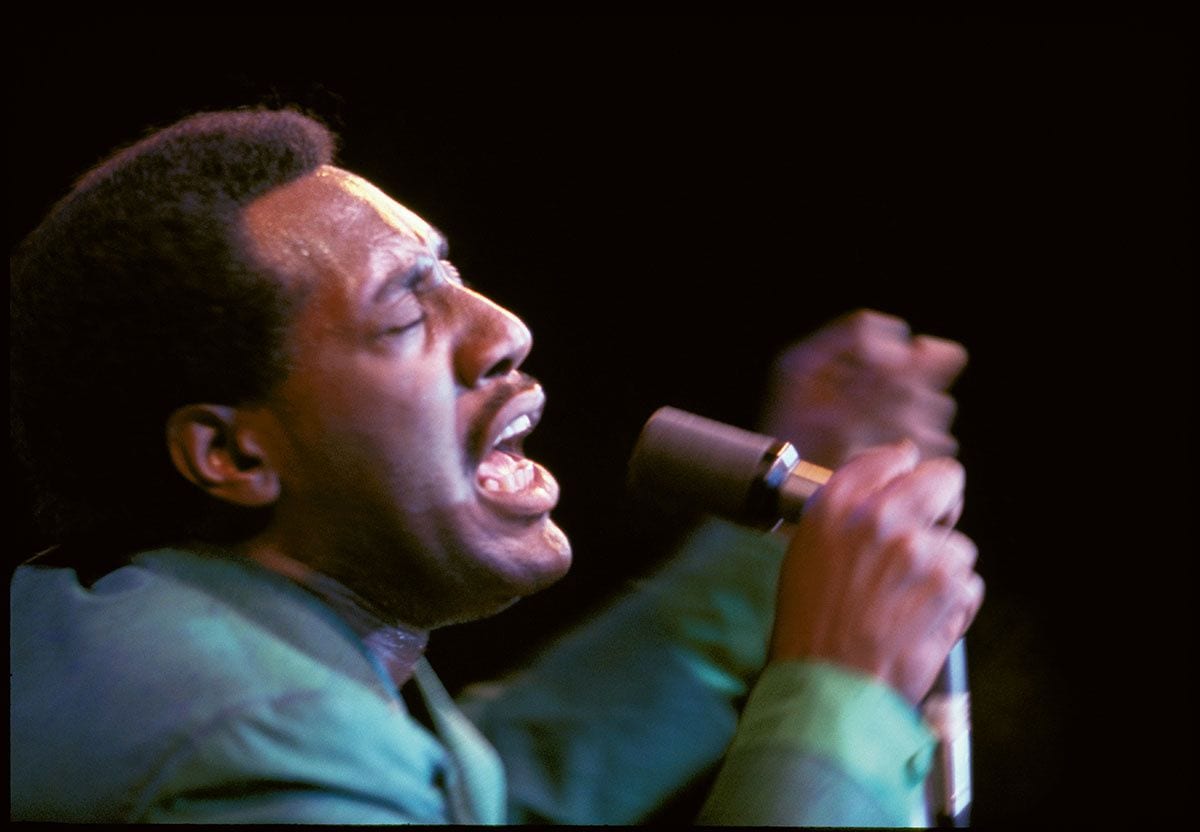
Otis Redding, Monterey Pop Festival, Monterey, California, 1967 (Courtesy of Chronicle Books)
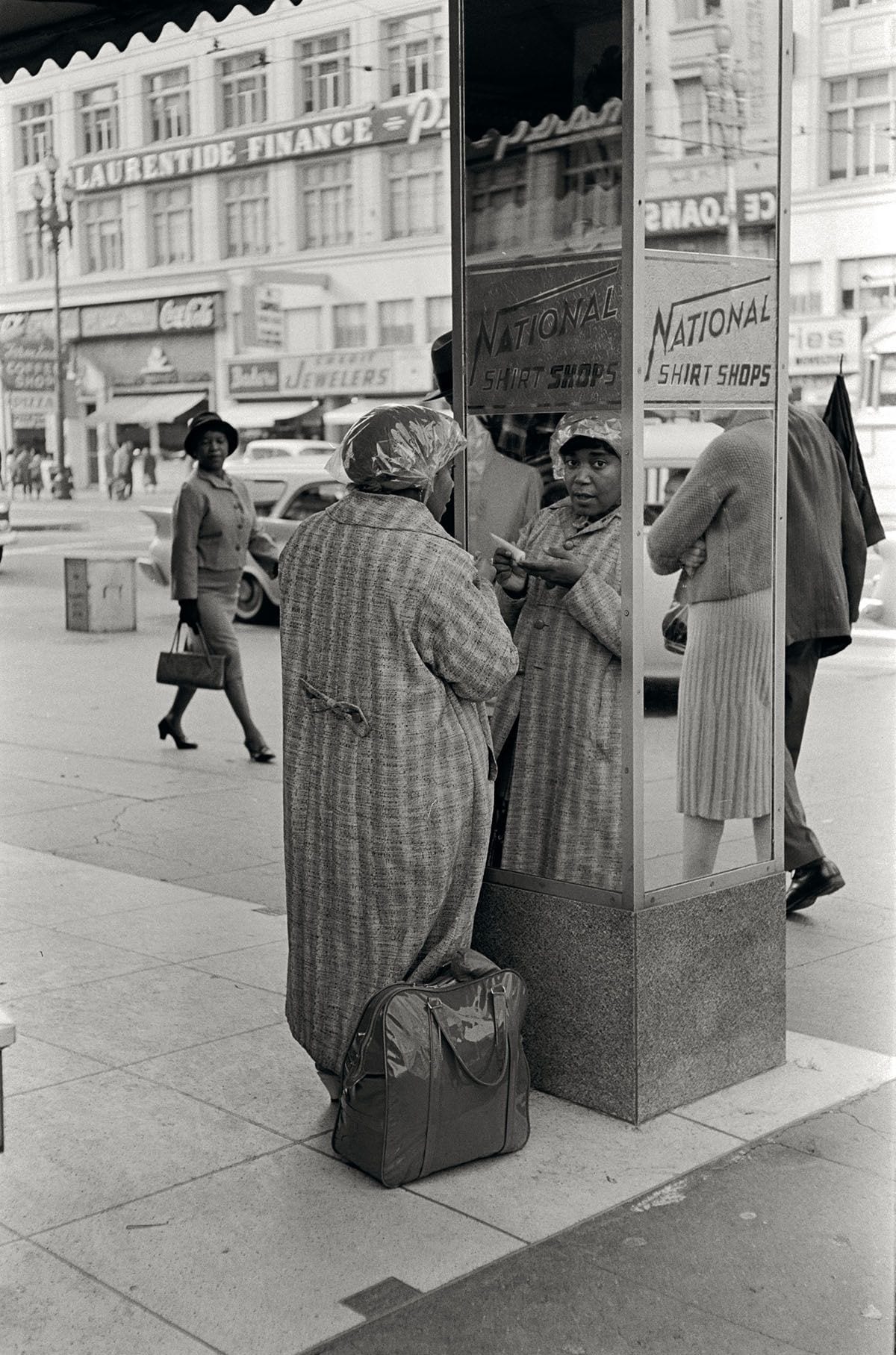
The Fillmore District in San Francisco, 1961 (Courtesy of Chronicle Books)
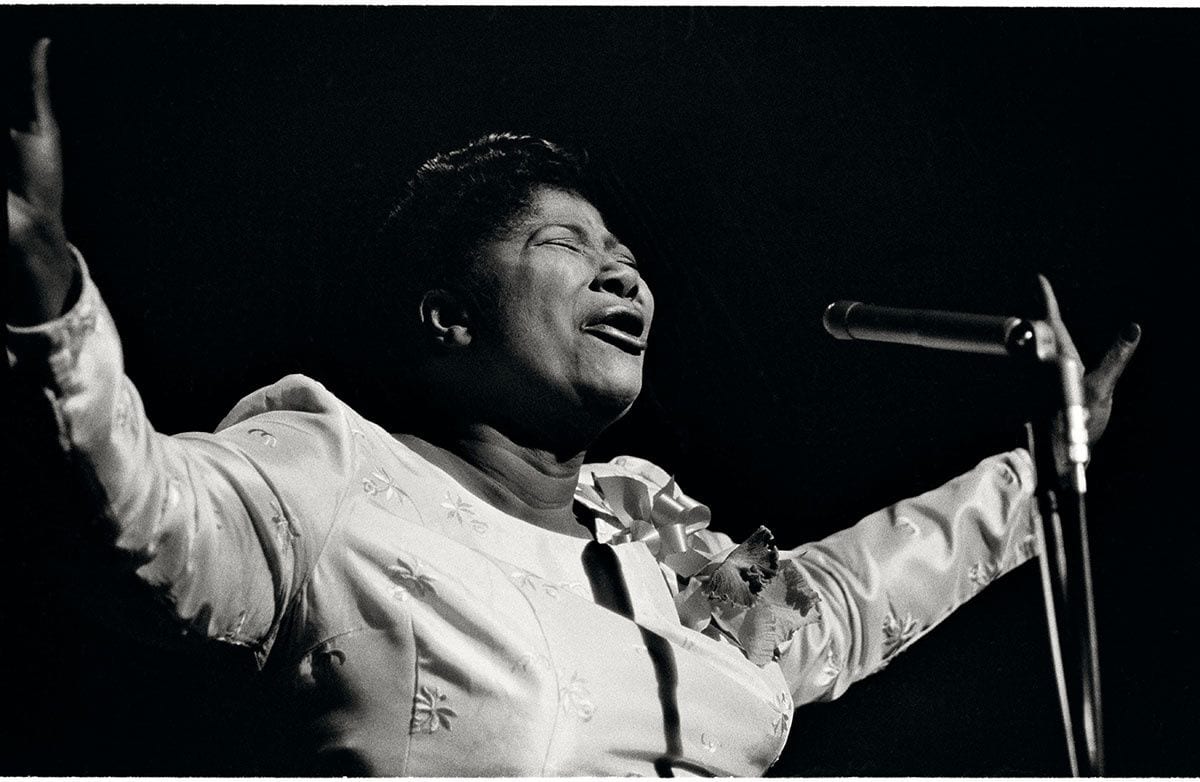
Mahalia Jackson performing at Carnegie Hall in New York City, circa 1960 (Courtesy of Chronicle Books)
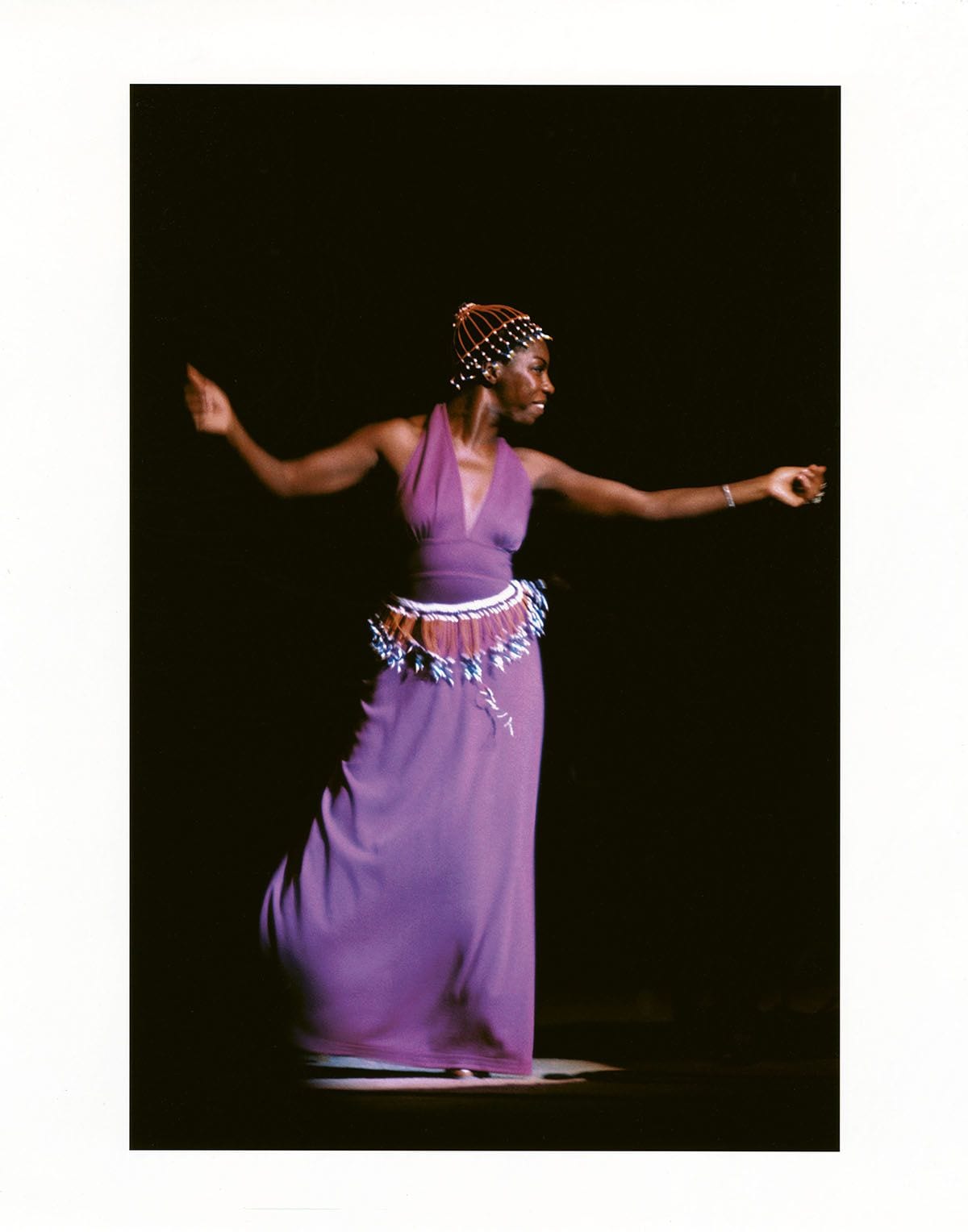
Nina Simone in New York City, circa 1960 (Courtesy of Chronicle Books)
Jim Marshall: Show Me the Picture, also documents the difficulties that arise in being a presence among others’ lives. On assignment to shoot a coal-mining family in 1963 Hazard, Kentucky, Shiffler makes a clear point about the consequences of such missions where photographers live with the poor to document their lives:
“The images are heartbreakingly truthful, but do not come over into dissecting or exploiting human suffering. Depicting trauma was never part of Marshall’s agenda with this shoot or any other in his career.”
Marshall’s early assignments are obvious foundations for the career that followed. Shiffler continues: “He would get as close as his subjects allowed, and he would never compromise his integrity or dignity.” In 1962 at a lunch counter in Sausalito California, four people sit, their chairs turned away from the counter. They’re three old women, smoking cigarettes and looking off to our left, while the man to the right seems to be wondering why he’s there. Jazz singer Anita O’Day appears on stage, eyes closed, singing. A few pages later, another woman seems lost in a dream as she listens to a live recording of a 1961 Ray Charles performance. A woman in the audience of “The Greatest Gospel Event in History” (NYC, 1963) looks wide-eyed at the stage, a light illuminating her from above. Pete Seeger holds court backstage at The Village Gate, 1962 NYC, with a young and eager Bob Dylan.
Shiffler qualifies here that “Marshall had his own lifelong love affair (unconsummated) with Joan Baez.” The accompanying photos are of Baez and Dylan at the 1963 Newport Folk Festival. John Coltrane appears in this section, and another, alone, deep in thought, with and without his saxophone. A small clown backstage at the Ringling Brothers and Barnum & Bailey circus, in full costume, sits on a folding chair as he lights a cigarette. It’s this ability to capture the artist at rest that resonates most with the viewer.
Whether these photographs depict artists at work, rest, play, or arms wide open — like the wonderful separate shots of Mahalia Jackson and Nina Simone with arms outstretched, in the middle of capturing their own magic — Marshall was a master of the moment. The famous 1963 shot of Bob Dylan rolling a tire around a Greenwich Village street is, as Margetts writes, “…an image so iconic and mysteriously compelling that it became much bigger than itself from the moment it was first printed…” Rather than weighing the collection down with implications of metaphors about the circle of life, Margetts (and Marshall) logically conclude that sometimes a tire is just a tire. Sometimes, pictures embracing youth should be embraced for their innocence, and not corrupted with meaning.
In “Showing Dignity in the Delta”, Bates writes that Marshall’s pictures of the Civil Rights Movement, and especially those from Freedom Summer 1964 in Mississippi, “..recorded the experiences of these impoverished lives without demeaning the people who led them…He…showed them a courtesy local white people couldn’t — or dared not.” Fannie Lee Chaney stares into Marshall’s lens in a full-face portrait after hearing about the death of her son, James. Women stand in a small room during voter registration training for CORE (The Congress of Racial Equality) and SNCC (The Student Nonviolent Coordinating Committee). Something about its style makes it looks like it was shot in 1863, not 1963. Marshall captures New York City street scenes after the death of John F. Kennedy. Bates writes of Marshall’s abilities to be in the civil rights scene as it started to take flight:
“Jim took these photographs before he became known as the chronicler of rock royalty. The quiet dignity of the Mississippi Delta residents stands in stark contrast to his later photos of the Summer of Love…before Jim Morrison…Janis Joplin…Woodstock…Jim would probably say that these pictures…of people…who tried to rearrange the country’s architecture of injustice…are just as important.”
By the time we get to “Music Festivals”, with an essay from Margetts and Davis, the elegant decadence captured in Marshall’s starts to settle in. There’s Brian Jones and Jimi Hendrix backstage at 1967’s Monterey Pop Festival. The stars from Monterey and other locales spill onto the page but never collide with each other, photos of Buddy Guy, Duke Ellington, Kris Kristofferson and Willie Nelson and Waylon Jennings. We learn that Marshall was “…such a weirdo combo of renaissance man and street kid…able to connect with just about anybody…once that connection was made, trust was right around the corner.” Was Marshall a “Zelig” type character who could assume the voice of anybody in his presence to connect with them? It would seem so.
The photos of Jazz greats are mostly taken backstage, the settings intimate and relaxed. “The Golden Years”, (with an essay from Joel Selvin), starts with a 1963 photo of Thelonious Monk and his family, posed and smiling in their apartment kitchen. Of the burgeoning hippie scene and Marshall’s connections with The Grateful Dead and Jefferson Airplane and others, Selvin writes:
“Marshall was captivated…but he was no hippie…He sported an aggressive, in-your-face attitude at odds with the tenor of the hippie community. Still, he recognized the deep musical roots.”
Marshall accompanies Johnny Cash for the latter’s legendary 1968 trip to Folsom Prison. There’s violence in Marshall’s life that seems to be purely of his own making. As his behavior seems to deteriorate, his popularity and demand for his services continues to rise. Shots of anti-war protests and festivals are compelling, but they’re no match for those of Jimi Hendrix. There he is at a soundcheck. Turn the page, and there’s one of the most famous Hendrix shots of all time. He’s at the 1967 Monterey Pop Festival, kneeling before his enflamed guitar. His face is focused, with a mix of ecstasy and concentration.
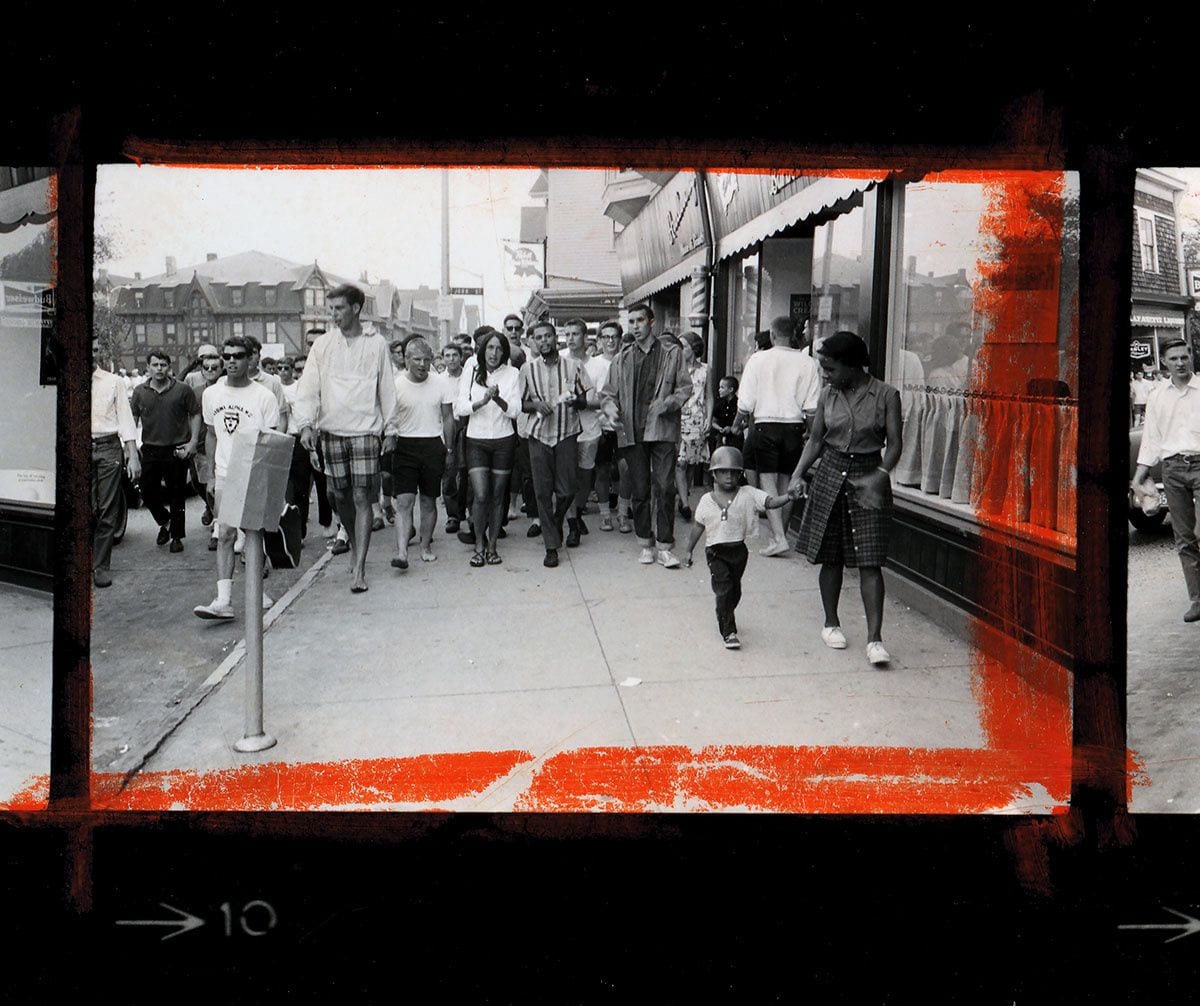
Selection from a proof sheet: Joan Baez and Freedom Singers participating in the trial run for the March on Washington through the town of Newport, Rhode Island, Newport Folk Festival, July 1963 (Courtesy of Chronicle Books)
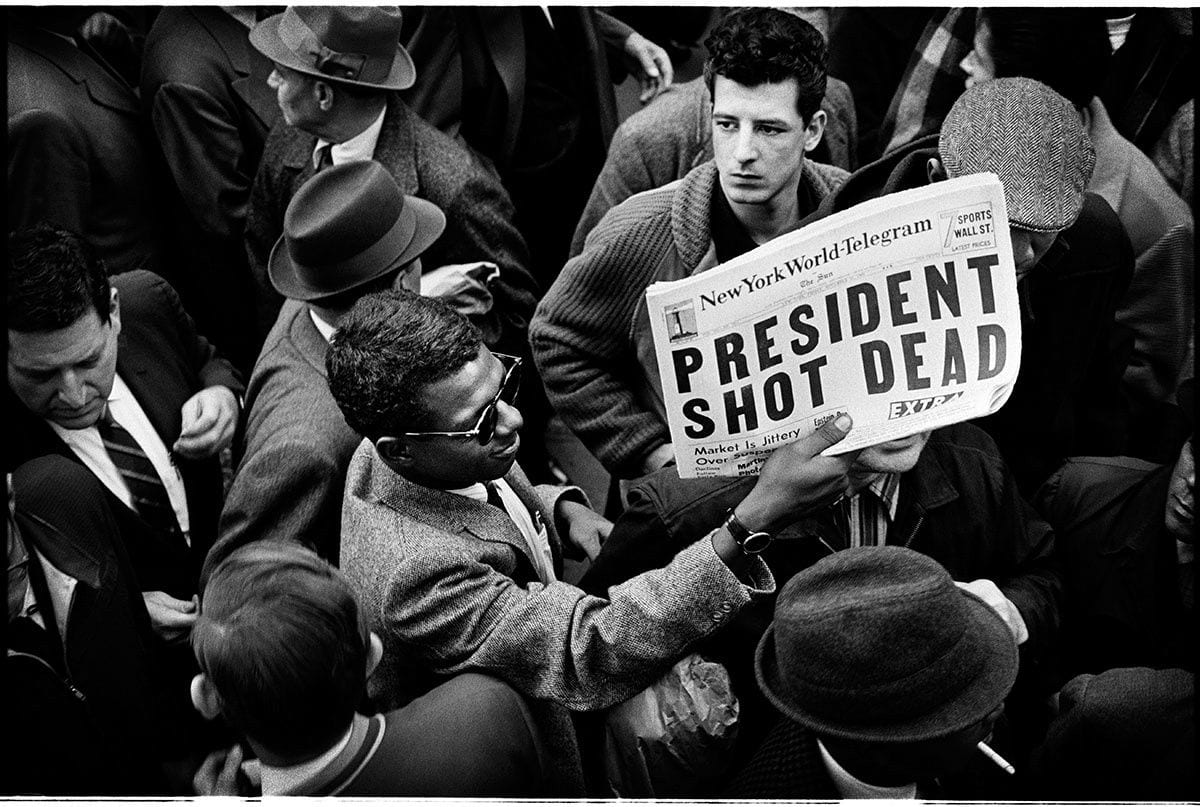
“President Shot Dead,” New York City, November 22, 1963 (Courtesy of Chronicle Books)
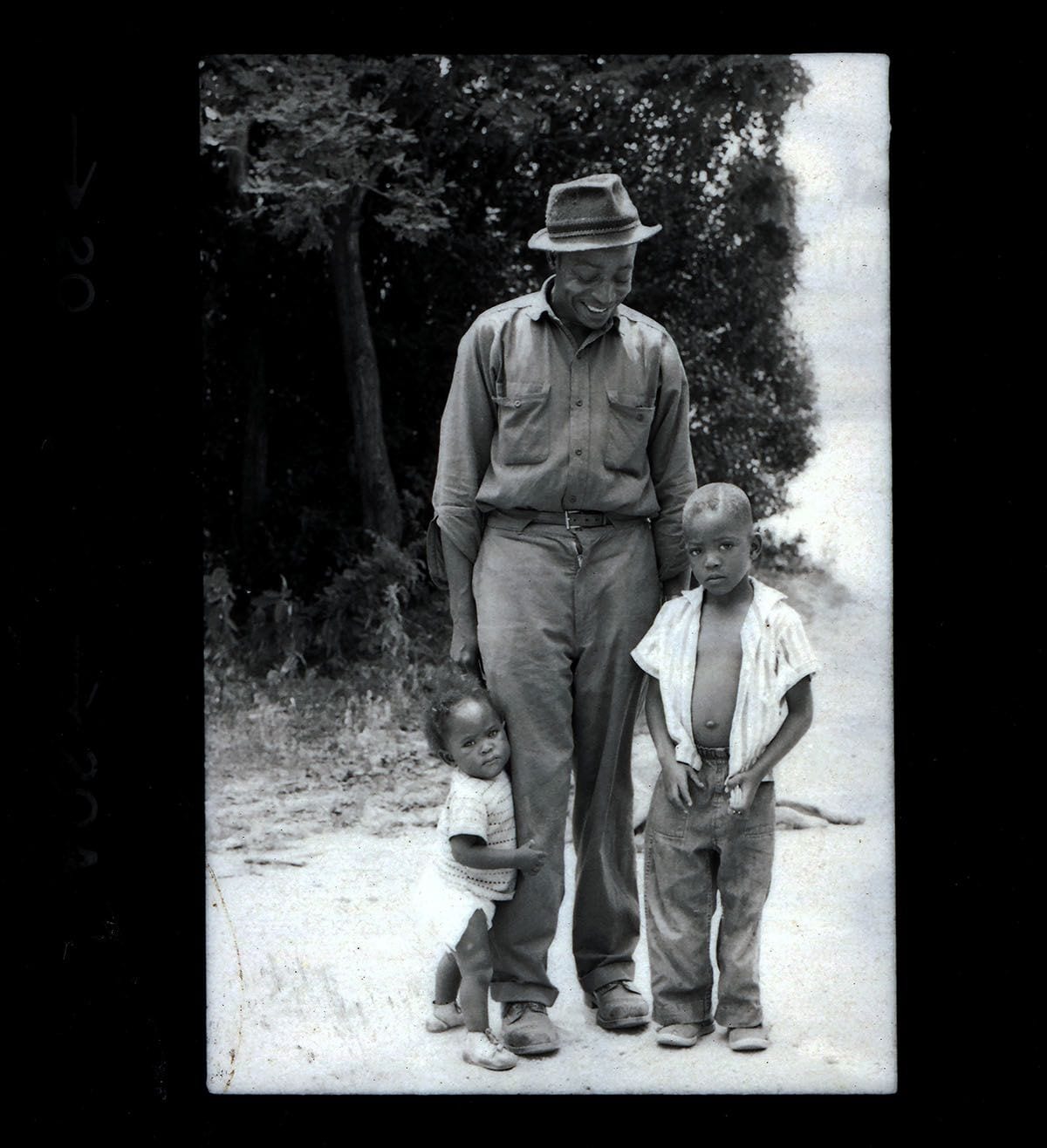
Selection from a proof sheet: Proud father with children during the CORE and SNCC Freedom Vote trial run, Mississippi, 1963 (Courtesy of Chronicle Books)
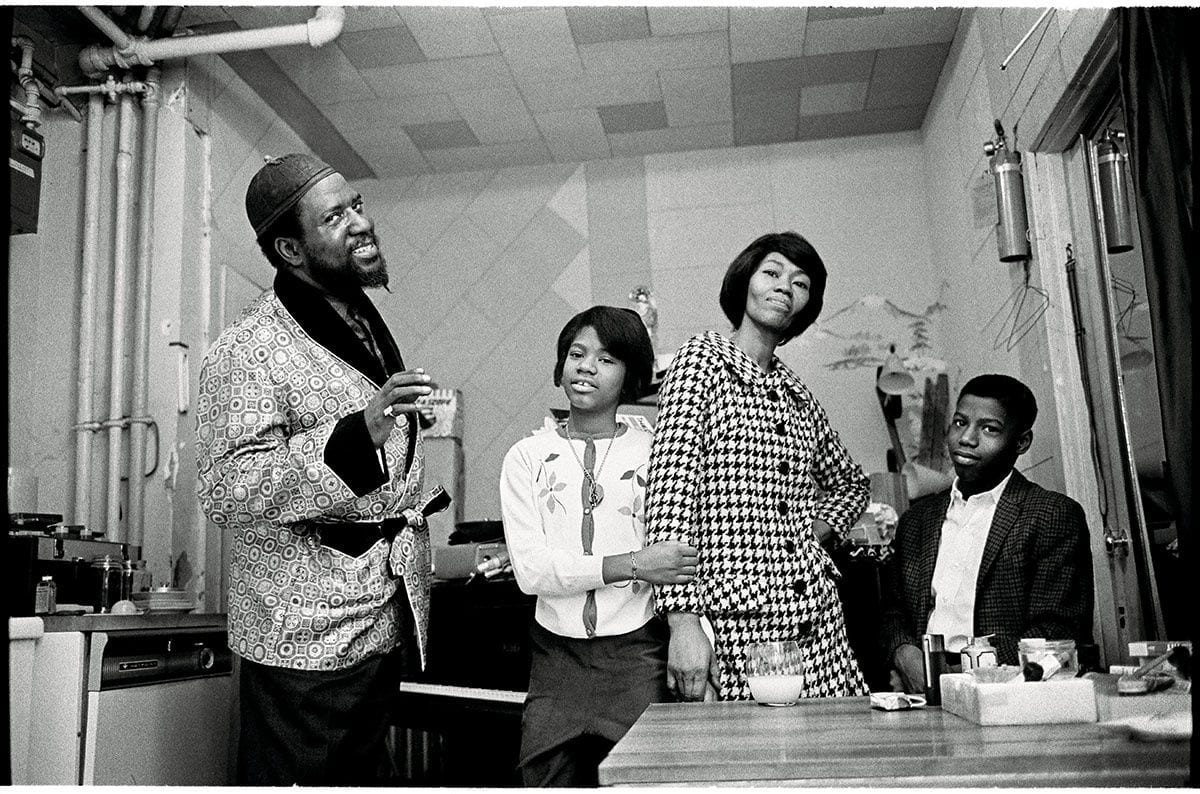
Thelonious Monk and his family in their apartment’s kitchen, New York City, 1963. This photo was shot for a Saturday Evening Post story. (Courtesy of Chronicle Books)
The 1968 film Montery Pop, (by the recently departed D.A. Pennebaker) is one thing. We can see Hendrix as he finishes the song and starts the fire. But the single Marshall photograph is even more incendiary. Other photos in this section include Aretha Franklin, Ray Charles, and King Curtis onstage at the Fillmore West. They’re all bathed in fiery red spotlights. Marshall captured Johnny Cash flipping the bird at the camera in a defiant message to the Warden of San Quentin. John Carter Cash says of this legendary photo:
“When I look at the famous picture of my father with his middle finger raised…I feel the energy of the moment, I feel my father’s sense of defiance.”
Whether on tour with the Rolling Stones in 1972, shooting Led Zeppelin, or an amazing multiple exposure shot of Rahsaan Roland Kirk, the contemplative reflection of backstage is transferred to center stage. The “action” shots of performers are suitable documents of events that will never happen again, but it’s the backstage shots that will linger with this viewer. Take the images of Jefferson Airplane singer, Grace Slick. Michelle Margetts writes, “…she had it all — looks, talent, charisma, craziness, plus the upper crust background…” She burns through Marshall’s lens with a fierce look of determinism.
Janis Joplin, Slick’s antithesis in many ways, looks ecstatic backstage, but also somehow defeated. Margetts writes, “…Joplin never once told him when to shoot or what to print… Zits, bad hair, fat thighs, exhaustion…” Logic might dictate that when Joplin and Slick came together for one of Marshall’s rock portrait shots that their essences would cancel each other out. On the contrary, the calm and peace found in these photos are reassuring. The innocence in both reminds us that everything on stage is just theatrics.
The “Woodstock” chapter is amazing in that it pairs photos of the legendary ubiquitous scenes with images from a North Carolina Bluegrass Festival. The latter takes place a mere weeks after the former, but it could just as well have been in the 1930s, given its visual style. In a spread about The Allman Brothers, Galadrielle Allman (Duane’s daughter) reflects on Marshall’s skills: “…Jim created a visual culture… that elevated all of these musicians… I’d always been told my father lived with his guitar around his neck, and Jim just caught it.”
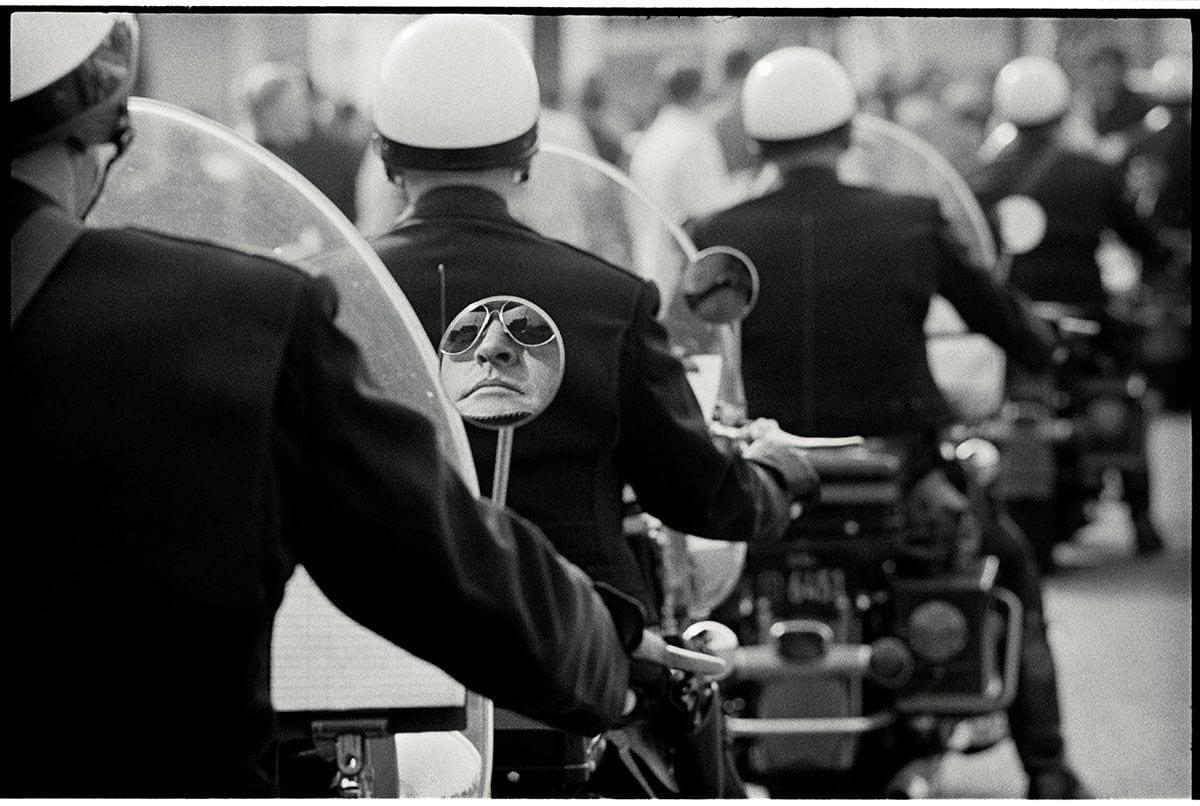
Oakland Motorcycle Police at an anti-war protest, Oakland, California, 1965 (Courtesy of Chronicle Books)
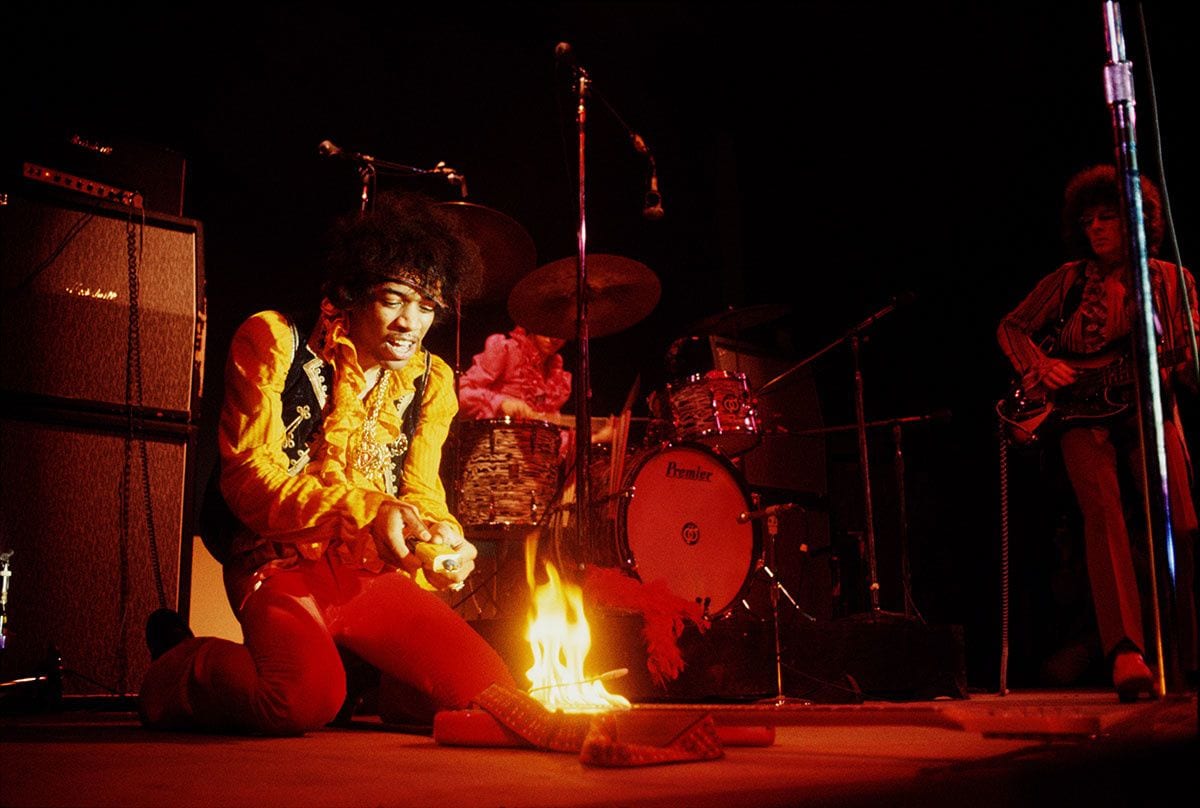
Jimi Hendrix lighting his guitar on fire, Monterey Pop Festival, Monterey, California, 1967 (Courtesy of Chronicle Books)
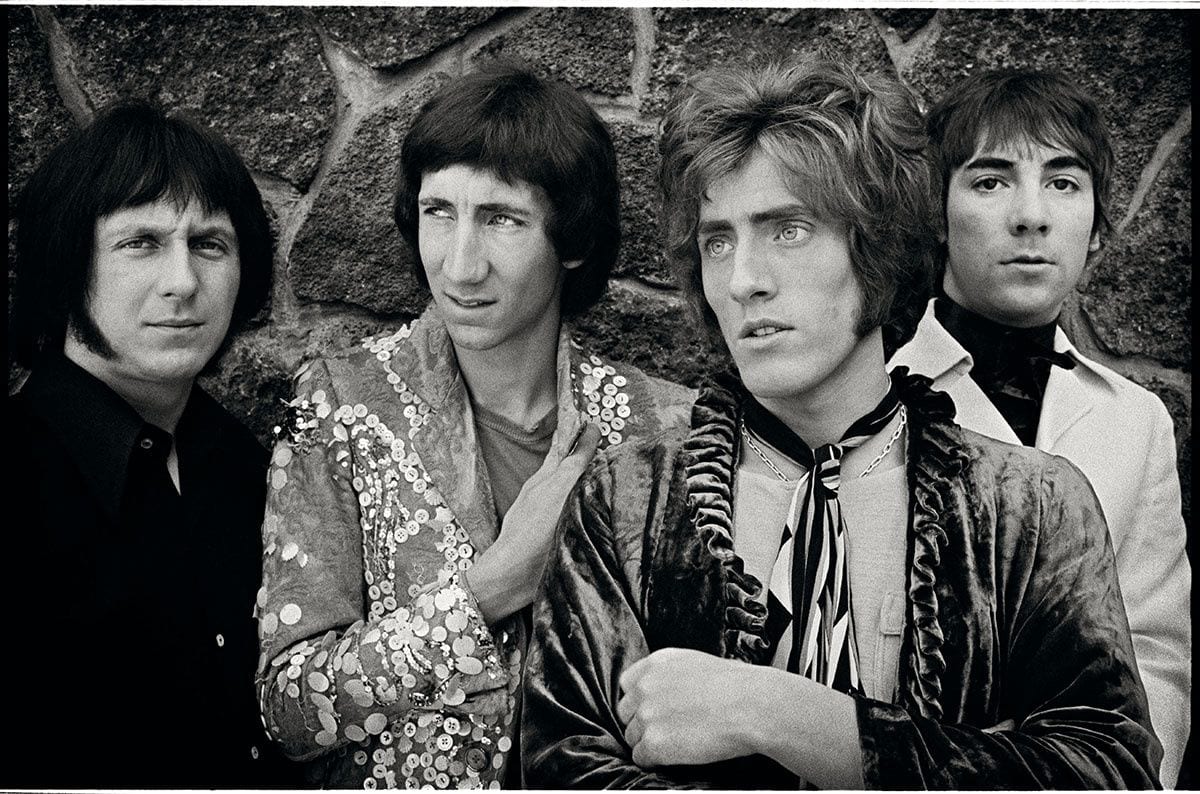
The Who outside their hotel in the Tenderloin, San Francisco, 1967 (Courtesy of Chronicle Books)
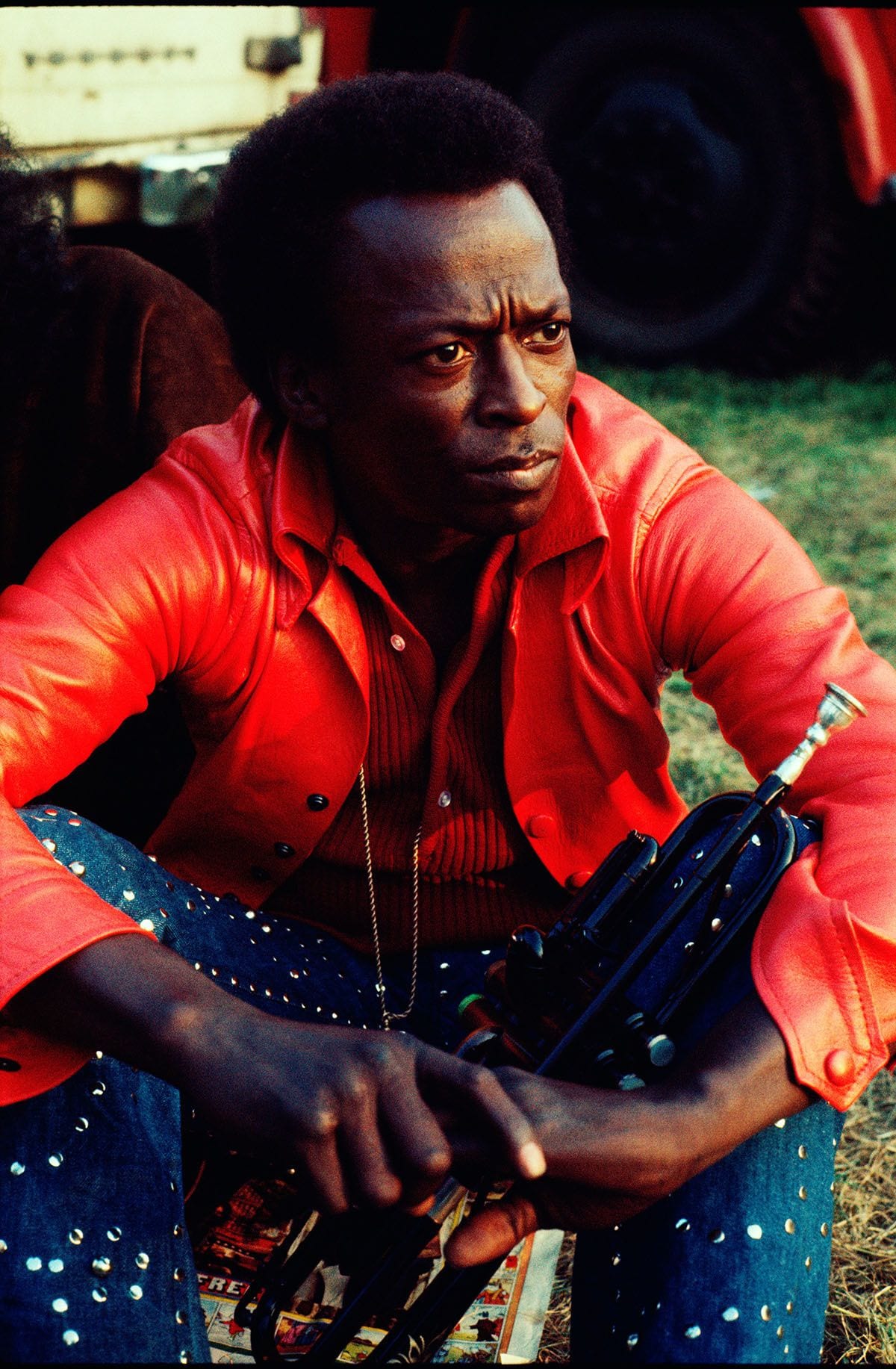
Miles Davis, Isle of Wight Concert, Isle of Wight, United Kingdom, 1970 (Courtesy of Chronicle Books)
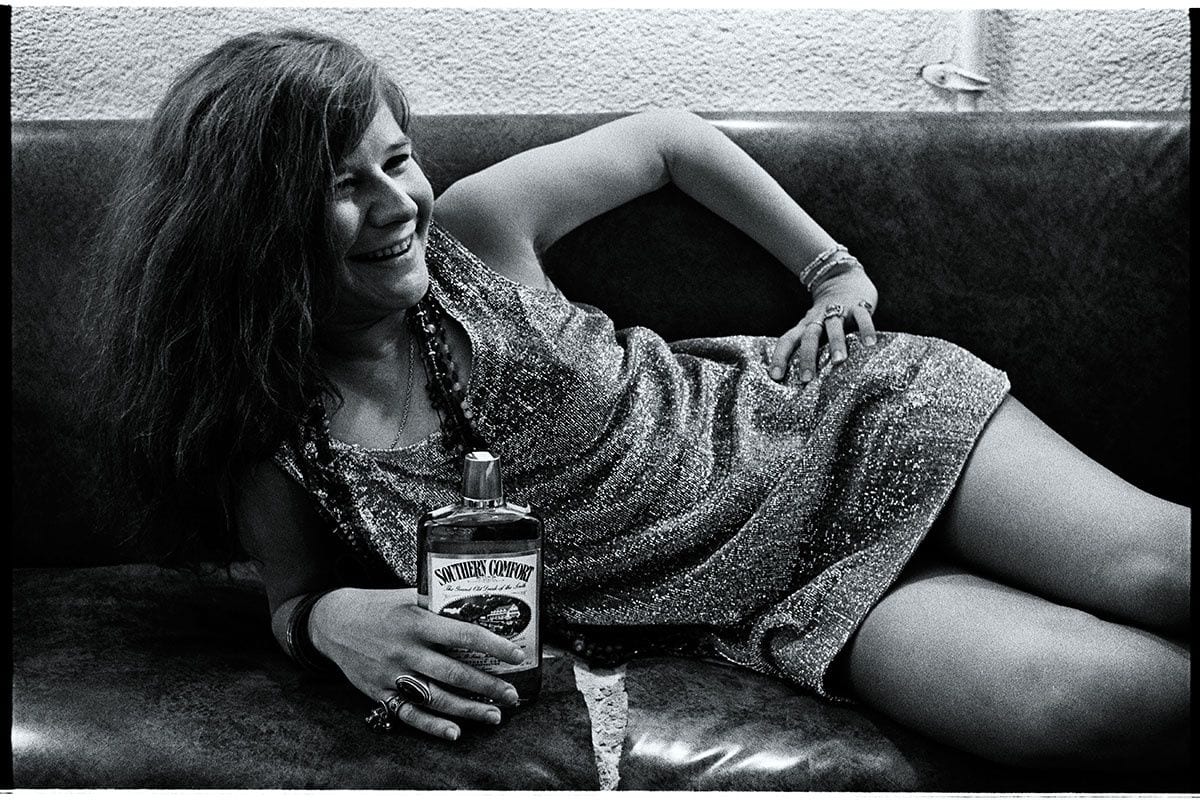
Janis Joplin “happy” backstage at Winterland, San Francisco, 1968 (Courtesy of Chronicle Books)
Relationships, however brief, are critical for photographer and subject. Odetta and Elizabeth Cotton joyously greet each other backstage at the 1978 Berkeley Folk Festival. Jump back nine years, and there’s Crosby, Stills, and Nash performing at the Big Sur Folk Festival. Crosby, still displaying a presence not yet corrupted by the drugs that would follow, is grinning, looking at something beyond our view.
Margrett’s chapter “The Kid and the Old Man” is a touching look at the May-December relationship she had with Marshall at his lowest points in the 1980s. “The twenty-eight-year age difference was more curse than blessing,” she writes. “…What I really wanted was for Jim to take everything that was good and wise in his brain… and shove it into mine.” It’s a chapter that makes the reader wish for more detail, more images, more reflections.
Later chapters, “Jim the Poet” and “William Saroyan” touch on Marshall’s affinity with “scenes”. This is seen in a 1965 photo of Allen Ginsberg (in a classic shot with Robbie Robertson and Dylan), and the old-school connections Marshall (a Persian Assyrian) made with Saroyan (an Armenian orphan.) Marshall was a romantic at heart. The proof sheet of poet Ogden Nash shows him reflecting through a haze of cigarette smoke and ennui, romance deep in his eyes. There’s a rare shot of Miles Davis in the boxing ring, relaxing in a corner, glaring at Marshall with calm and focus. John Coltrane shows up again in a stunning 1963 shot outside his Queens, New York home, the sun setting behind him as he looks softly into the distance.
With Davis and Coltrane, Marshall was able to capture his subject’s tone in a single shot. Marshall captures Coltrane as he’s creating jazz fusion, as chaotic and divisive as some jazz could be, but the photos are calm. Images of him here are graceful, and read like soft whispers from a man searching for a higher meaning in his life.
Davis’s chapter, “The Care and Feeding of Jim Marshall”, describes what the photographer was like in 1998. He was “…in a good place and a not-so-good place. He was in his late 60s, and he was still hooked on cocaine. Davis concedes, in her last paragraph, that she cared for Marshall as her “man-child”. There are a few more stories to tell, a photo of Carol Channing backstage at a performance of Hello, Dolly!, and Mary Martin in a recording studio. There’s a 1982 photo of five plumbers standing in front of a Ford truck, laughing and relaxing. One of them notes: “We were plumbers, but Jim made us look like rock stars.”
The timeline might not be consistent as this book ends, but that’s a minor quibble. As we can see by the end of Jim Marshall: Show Me the Picture, the photographs tell all we would need to know. Marshall was perhaps best known for his pictures of rock, jazz, and blues stars at work and relaxed. They’re sublime (John Coltrane) and routine (Led Zeppelin) but never boring. There’s a sweet moment near the end where Margretts writes about Marshall’s legacy into the Obama White House:
“Jim received a wonderful photo snapped by a White House photographer of President Obama studying the Coltrane portrait intently. On the mat overlay, the President wrote: ‘To Jim — I’m a big fan of your work…and Coltrane. I will never forget… Jim’s face when he looked at that photo…T here was no mask, no barrier. I just saw awe, humility…”
If Marshall was “…erratic, impulsive, neurotic, paranoid…” and everything else that the darkness of his times might have helped create, from them sprung a lifetime’s work of beautiful photos. Jim Marshall: Show Me the Picture is a stunning testament to his persistence, compassion, genius, and tender vision.
(Fans of Marshall’s photography will also enjoy Alfred George Bailey’s 2019 documentary, Show Me the Picture: The Story of Jim Marshall.)
- Wonder: The Photos of Stephanie Chernikowski - PopMatters
- 'Frame of Mind' Depicts Women in Punk Music, Unfiltered - PopMatters
- Shape of Light: 100 Years of Photography and Abstract Art ...
- Instant Photography Before the Digital Era - PopMatters
- Vivian Maier: A Photographer's Life and Afterlife - PopMatters
- Jim Marshall: Show Me the Picture | Chronicle Books
- Jim Marshall: Show Me the Picture Book Trailer - YouTube
- Show Me The Picture: The Story of Jim Marshall (2019) - IMDb
- Jim Marshall: Show Me the Picture: Images and Stories from a ...
- Show Me The Picture: The Story of Jim Marshall - SFFILM
- The Official Website of Jim Marshall Photography | GRAMMY Award ...

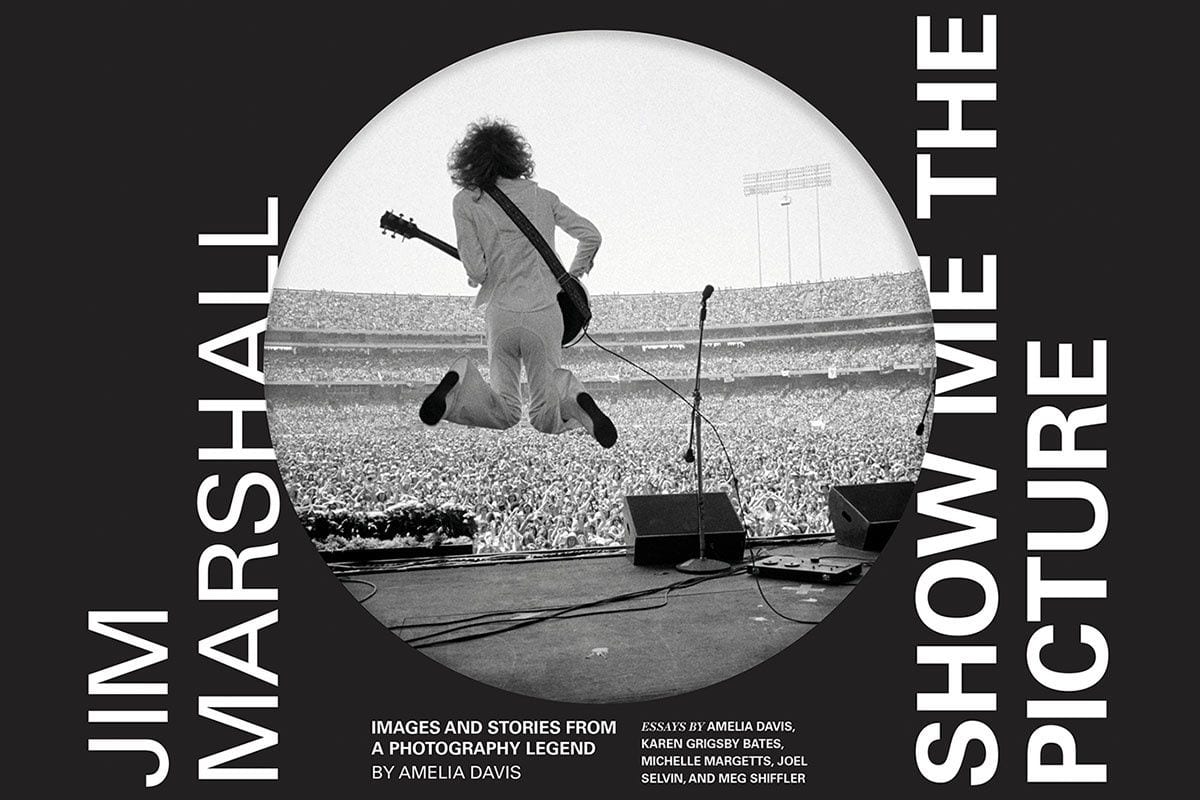
![Call for Papers: All Things Reconsidered [MUSIC] May-August 2024](https://www.popmatters.com/wp-content/uploads/2024/04/all-things-reconsidered-call-music-may-2024-720x380.jpg)



